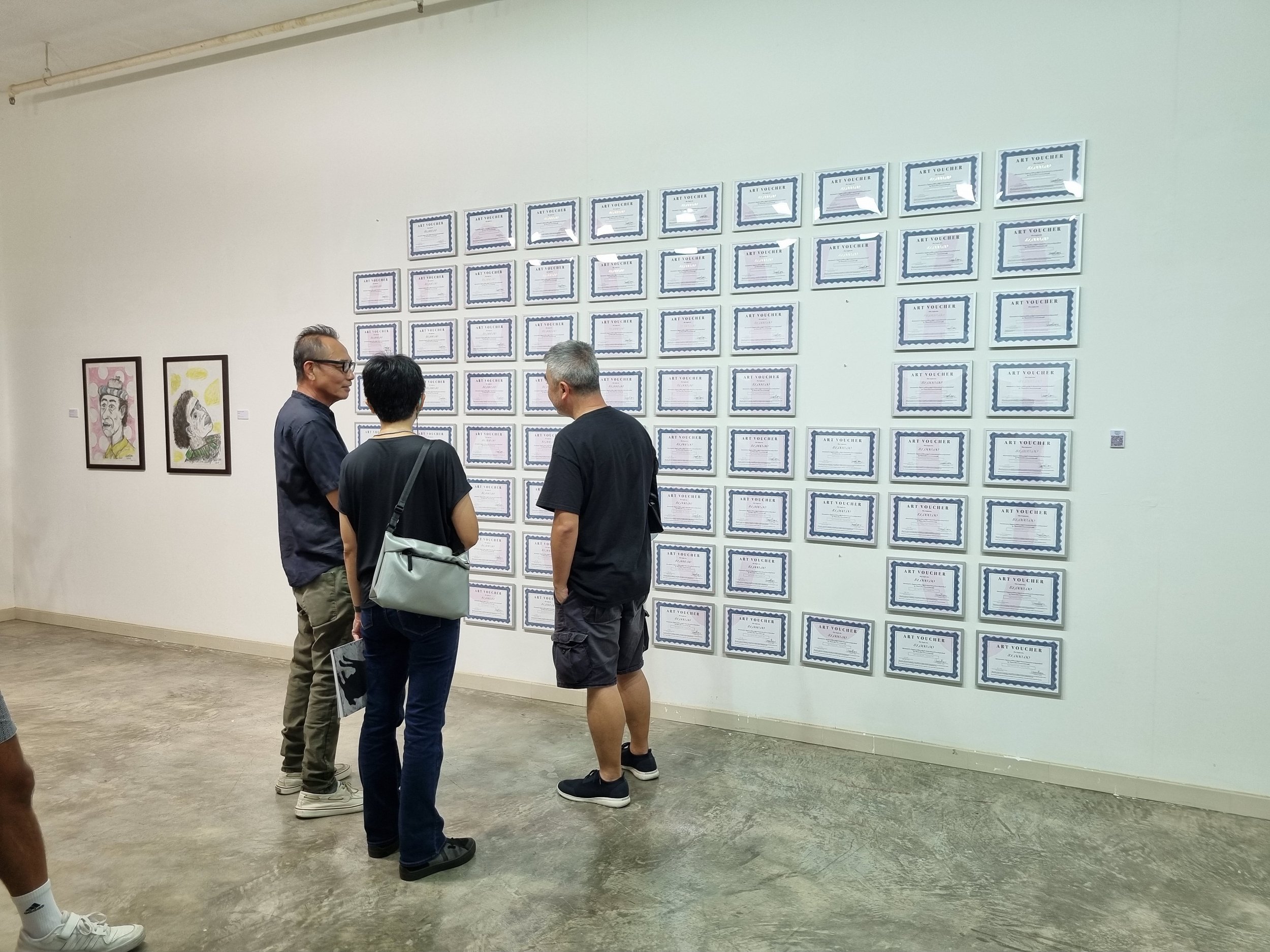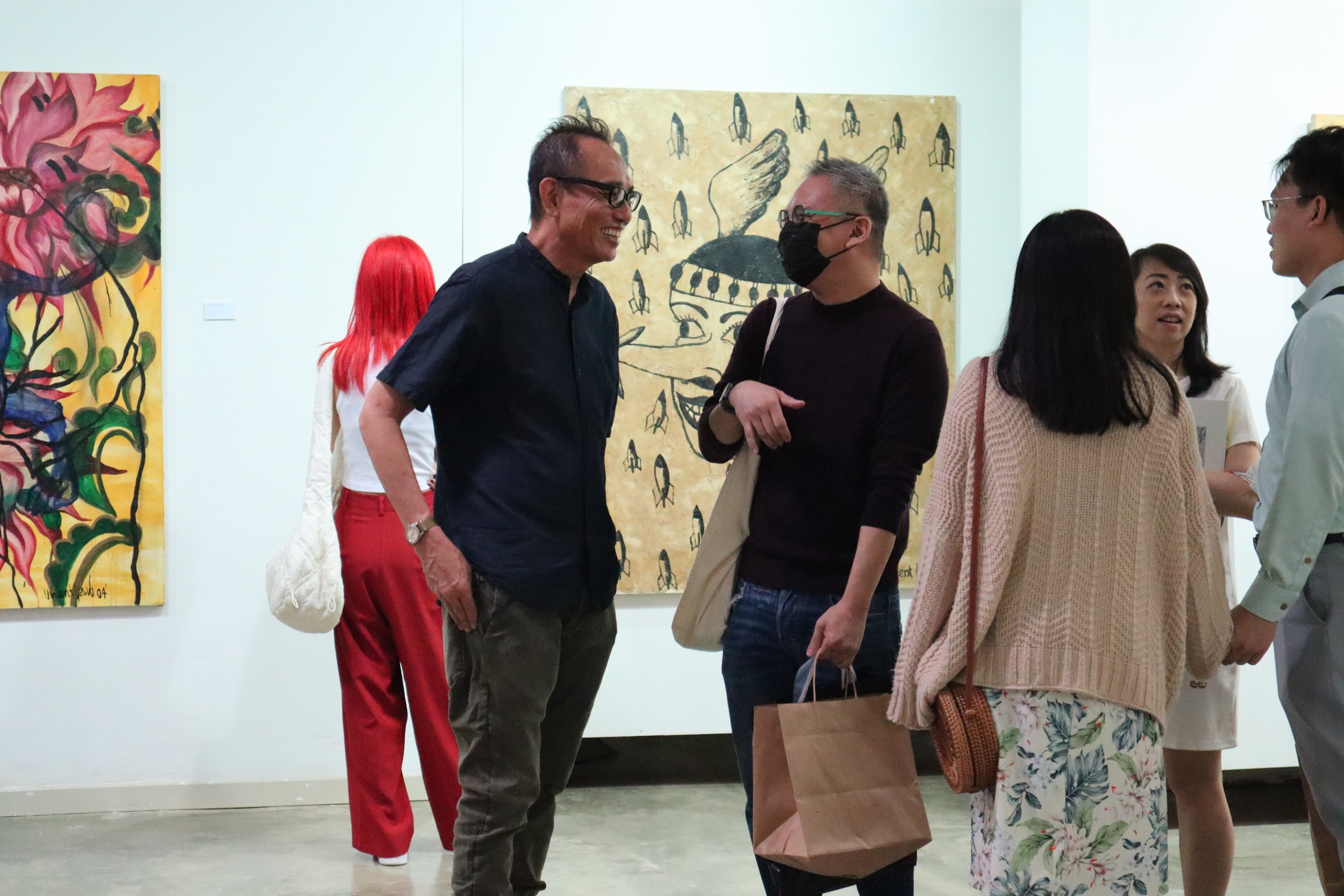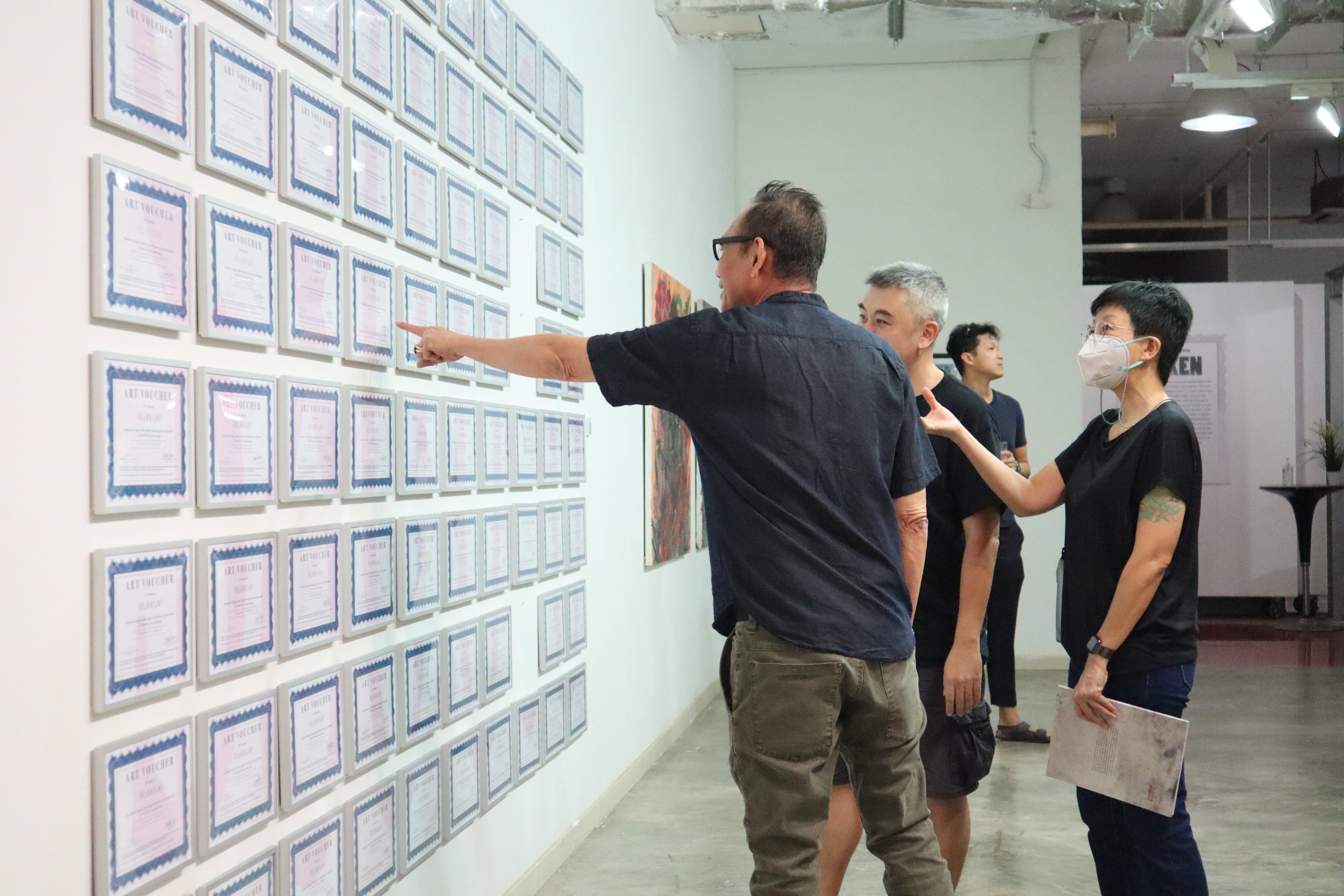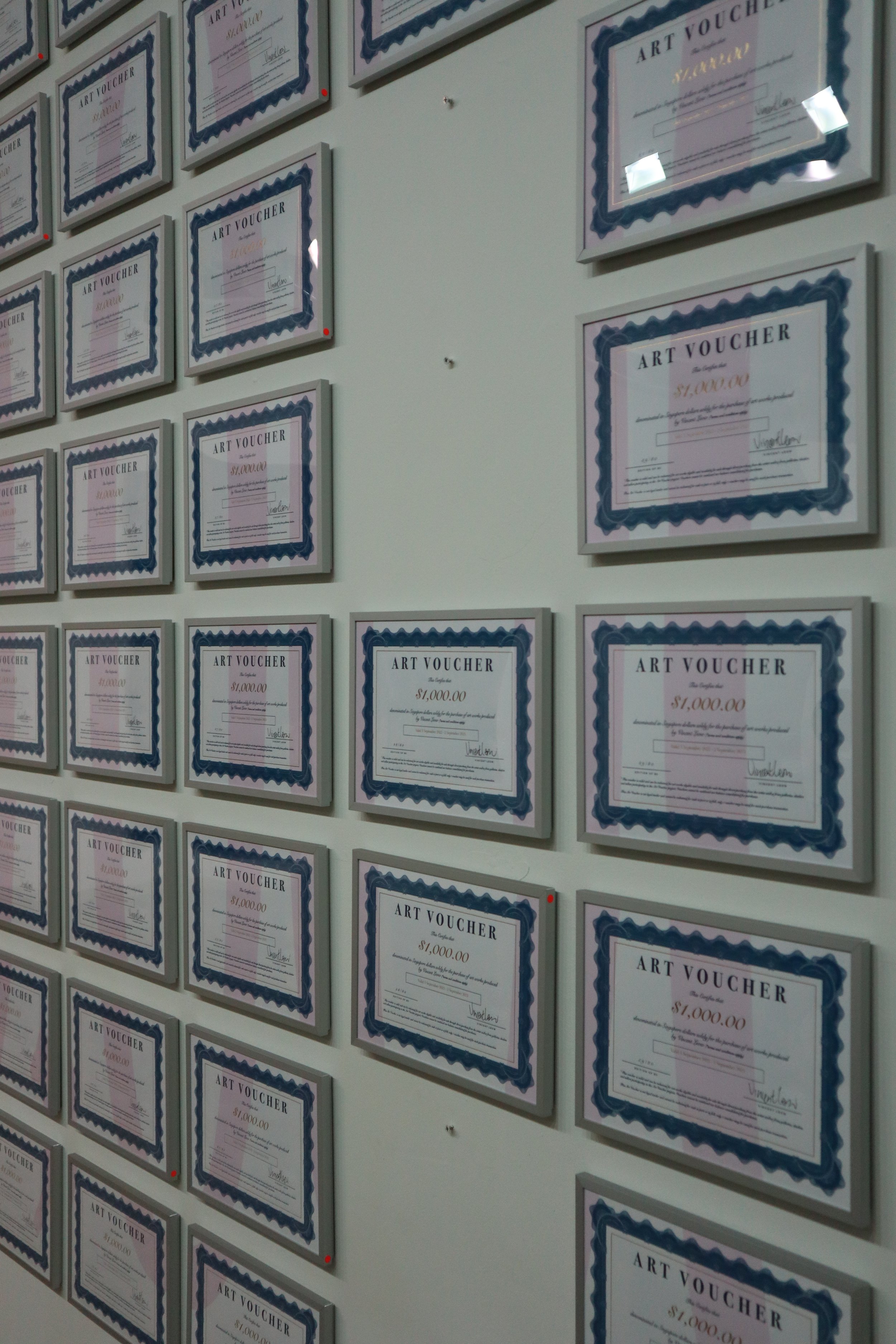













ARTIST PROFILE
Vincent Leow / 廖光炎 / 廖芳炎 (b. 1961) is a visual artist and educator known for his wide use of mediums such as sculpture, painting, printmaking, drawing, performance art, and more to interrogate the role of the artist and art-making in contemporary society. He is a recipient of the cultural medallion award 2020. Having spanned over 35 years, his practice is formidable in its diversity and criticality. Interspersed with his own personal observations and experiences, Vincent weaves various social and communal contexts into his works impelling his artistic practice to the public forefront and inspiring others.
After graduating from LASALLE (Lasalle College of the Arts) majoring in sculpture and minoring in printmaking, in 1987 he obtained his MA in Fine Art in 1991 Maryland Institute College of Art, Baltimore, USA and completed his Doctorate in Fine Art in 2005 Royal Melbourne Institute of Technology, Melbourne, Australia. For the past 3 decades, Vincent has been involved in educating the younger generation in visual arts. He was previously teaching at LASALLE College of the Arts, serving as Head of the Sculpture Department from 1992 to 1996, as Senior Lecturer for the MA in Fine Arts programme from 2003 to 2007 and from 2008 to 2013. He was an Associate Professor at Sharjah University College of Fine Arts in the UAE. Today, Vincent actively continues his role as an art educator at School of the Arts (SOTA).
As a significant figure in Singapore contemporary art, Vincent was one of the early members of The Artist Village, founded in 1989. The collective focussed on conceptual and experimental art-making in Singapore in the late 1980s. A decade afterwards, Vincent co-founded an artist initiative, Plastique Kinetic Worms (PKW) and became Artist Director for exhibitions and programmes in Southeast Asia. PKW was a prominent artist-run space in Singapore with a network of artists who came together to exchange ideas, support one another and sought to creative liberty in their own practices.
Vincent was the recipient of scholarships and awards from the National Arts Council, the Mount Royal Scholarship, as well as the Japanese Chamber of Commerce and Industry (JCCI) Culture Award (2002). His works have been collected by both private collectors as well as institutions such as the National Gallery Singapore, NUS Museum, Singapore Art Museum, and Fukuoka Art Museum. Vincent has participated extensively in various group exhibitions such as the Chiang Mai Social Installation (1995); the 9th Indian Triennale of Contemporary Art (1997); and Singapore Children’s Biennale (2017), National Gallery Singapore. Some of Vincent’s prominent solo exhibitions since 1991 include Tags & Treats: Works by Vincent Leow at Singapore Art Museum (2010); For Andy’s Pranks & Swimming Lessons at Xin Beijing, China (2007) and Vincent Leow: Recent Paintings (1991), United States. Vincent has also represented Singapore on numerous international platforms, most notably at the Singapore Pavilion of the 52nd Venice Biennale (2007).
References:
1 National art council . (n.d). Vincent Leow - National Arts Council. Retrieved 18 October, 2022, from https://www.nac.gov.sg/docs/default-source/singapore-arts-scene-files/cultural-medallion/2020/vincent.pdf?sfvrsn=13b93df7_2
2 Vincent Leow. SOTA. (n.d.). Retrieved October 17, 2022, from https://www.sota.edu.sg/about-us/our-people/teaching-staff/faculty-of-visual-arts/vincent-leow
CONTRIBUTORS
- Ang Li Ya
- Evangeline Electra Handoko
- Farisah Binte Shafiee
- Sarah Kwek Jing-Wen
- Syahmin Huda Binte Yusman
ARTIST ANALYSIS
“Do people see this as a voucher or a conceptual artwork?”
Drawing inspiration from personal observations and experiences, Vincent Leow (b. 1961) works with several genres and mediums to showcase and express himself through his artworks. Having started his artistic journey primarily through painting as a medium, Vincent Leow has gone on to work with various genres like sculptures, printmaking, video works, drawing and more in the following years. Jumping onto one of his freshest concepts of consumerism and intangible art, the voucher project (2022) was created as part of his exploration of the norms of the social ecosystem and connecting people through art. The project also circles around the idea of art-making that aims to examine the role of the artists, as well as the audience, in art spaces. Further diving into themes of questioning art ownership and their complex cycles.
Displayed in a rectangular setting, arranged in vertical and horizontal rows of eight, each voucher is produced in an A4 size, capping them at 10 framed vouchers. Carefully printed and embossed with each of them having their own silver frame, these limited edition vouchers hold a reserve bid of SGD$200, which will be issued to the collector/buyer during the period of the exhibition. The prints evolve into art vouchers which are valued at SGD$1,000.00 each, printed and numbered, inviting the collector/buyer to openly select the voucher number that they are interested in. Moving forward, upon the selection and the purchase of the voucher, buyers are allowed to purchase any of Vincent’s artworks (from past collections and present) which they may offset a total amount of SGD$1,000 from the original total amount.
In tune with the birth of this project, Vincent investigates and experiments with the social interactions among art, artists and the public. It churns a relationship between art and business, allowing people to view this work as something that is both tangible and intangible in its very process. The work also explores the nuance of the socio-ecosystem and structures within our society today. Furthermore, forming a chain of thought coming from a place of conceptualising and research.
A deep dive into the project’s process looks at the artist's interest in exploring the commercial aspect of art, as ultimately most of the vouchers were all commercially prepared. Vincent had initial thoughts of using letterpress as it is an old method of printing vouchers. However, after realising that certain things cannot be achieved with letterpress itself in terms of details, he had to use a total of 5 different processes in printmaking. The first process was to have the SGD$80,000 watermark as the first layer of print done in silkscreen. To add, Vincent wanted to focus on the border of it which consisted of very fine forms, some of which had the serial number used in the digital print. The art voucher text was printed using letterpress followed by a gold stamp. An embossing process took place as well. As such, the research behind this work mainly analysed the features of what a voucher would look like and what kind of contents could be encompassed in the voucher such as; the terms and conditions to be applied. Vincent wanted to ensure that this work was informal, contrasting how real vouchers had an air of formality by being kept in envelopes. This eventually led him to frame the vouchers in the form of a bond certificate. Throughout this project, Vincent noted that he continuously referred back to specific elements in vouchers such as the “expiry date” and how each voucher could be used by the buyer.
The process also involved discussions with the gallery owner in terms of how long the voucher will be valid for. However, it is important to note the overall objective of the project does not entirely focus on the voucher itself, but on the concept. It highlights both the notions of purchasing art and its usage. In particular, the process captured valuable moments of the public's reaction and participation in art ownership (perhaps without them even knowing). Consequently, this draws attention to the role of art collectors and how they recognise a piece of work; whether they see it as a voucher or a visual art print.
Vincent considers this work a NFT because it represents the nature of only documenting the interaction of the person becoming a part of the work (or voucher) when it is bought by them. Thus, the challenge in this comes from the observation of how people view art and how artists can continue to sustain themselves within the industry. The idea of personalisation also interests him, allowing some of the buyers to make reservations of certain numbers that resonate with them and even securing an auspicious number among the 80 vouchers. Having received the cultural medallion award during the covid period, the ‘voucher culture’ was recognised and inspired him to create a work which displays the act of accessibility in art. When the pandemic hit back in 2020, accessibility could be seen as an obstacle and this was something Vincent’s thoughts circled around.
In conclusion, this voucher project directs us to look at art from different perspectives through collaboration and exchange. It encourages us to foster valuable relationships between the arts, artists and the public. More importantly, it informs our ways of seeing, observing and creating art.
References:
1 Vincent Leow. SOTA. (n.d.). Retrieved October 17, 2022, from https://www.sota.edu.sg/about-us/our-people/teaching-staff/faculty-of-visual-arts/vincent-leow
2 Vincent Leow. Vincent Leow | LASALLE College of the Arts. (n.d.). Retrieved October 17, 2022, from https://www.lasalle.edu.sg/star-alumni/vincent-leow
